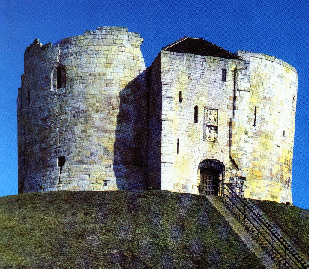

The tower sits atop a huge mound, in the middle of York, and is now surrounded by modern day streets and buildings- when it was originally built, a moat surrounded the base of the motte/mound. The moat also surrounded the rest of the castle (known as the Castle Bailey), but separated the keep from the bailey as a means of extra defense.
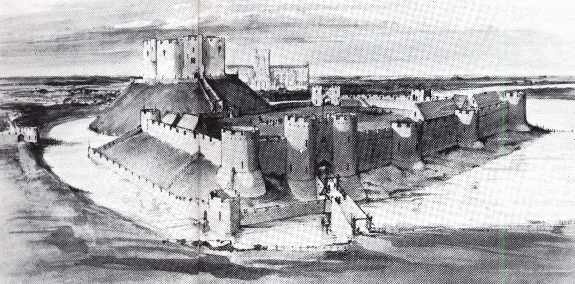
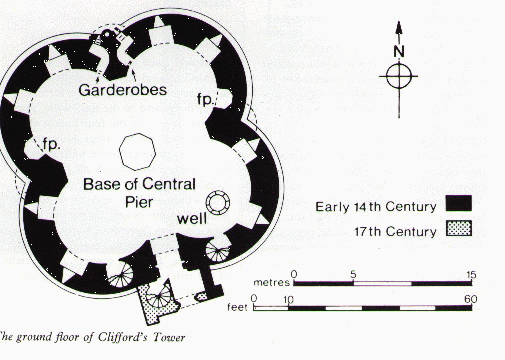

Once through the entranceway, we step into what is now a courtyard, within the walls of the tower. it is open to the elements now, but once was completely roofed. The octagonal-shaped structure in the centre of the courtyard is what is left of the pillar which once supported the upper floor of the tower. There is also a well in the courtyard which goes down approximately 50ft to the level of the original castle bailey- the flat rectangular part of the castle below the tower was known as the castle bailey. It is interesting to note that, shortly after the tower was erected, there was severe flooding in York (1315-16) which softened the soil of the mound on which the tower stands... and it is thought that, as a result of the flooding, the foundations were weakened for in 1358, the tower was described as 'cracked from top to bottom in two places'; the cracks are still visible to this day. Although the cracks were repaired at great expense by 1370, it wasn't until 1903 that the foundations were repaired. Thats over 500 years after the fact and the tower was still standing! this is a perfect example of the solidity of ancient stone construction... most likely much better than today's construction standards!!
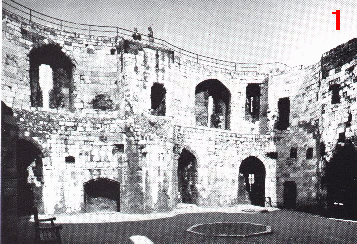
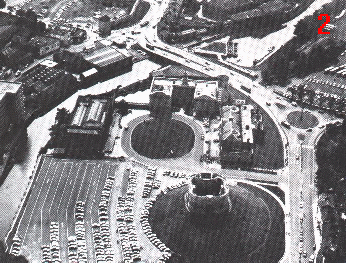
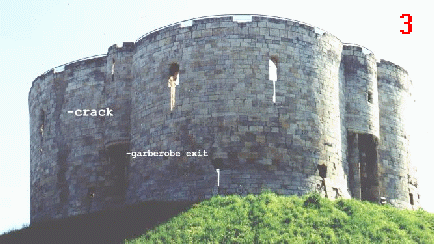
1) The inside of the tower- the plan itself is shown above- of interest is the Garderobes which were probably accessed via the doorway in the middle of the picture- just below the people that are walking around the top.
2) Ariel view of the Tower, looking south- it is possible to visualize the limits of the original bailey. Parts of the castle bailey remain to this day- remains of the curtain walls (outside primary defense wall), and some of the towers of the Castle bailey also survive and can be seen amongst more modern architectural structures of the city of York itself.
3) The rear of the tower- one of the cracks is visible to the left of the picture down the furthest 'foil'. The garderobes emptied out at the junction of the two foils (to the right of the crack).
Glossary of Terms:
Bailey: defended castle enclosure or courtyard
Garderobes: lavatories- basically a shoot in the wall that opens up onto the outsidewall of the castle
Keep/Stronghold: main stone building in a castle, extremely thick walls and self-sufficient in a seige
Moat: water-filled ditch dug around the base of a mound
Motte: a mound of dirt upon which medieval British keeps were built
Portcullis: heavy grid gate that needed to be raised and lowered by chains